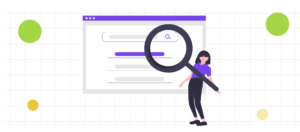The Comprehensive Guide to Nonprofit Automation


With passionate, dedicated staff and a mission to make the world a better place, nonprofit organizations are known for their ability to get things done using any means possible. But with limited resources, they can only do so much.
Improvised solutions and a DIY ethic often seem to be the only tools available to nonprofit teams. Staff members and volunteers are commonly asked to wear different hats.
While a jack-of-all-trades mentality is a great way to get an operation off the ground, it may not be the most efficient way to ensure an organization achieves peak performance and makes as big an impact as possible.
So what can a nonprofit organization do when you need to get more done and hiring more meat bags isn’t in the budget? Automate, automate, automate!
See How to Use Keela to Automate Workflows
Get a glimpse of how Keela’s AI-powered nonprofit software helps nonprofits to improve their fundraising and donor engagement strategies with automation.
What is Automation for Nonprofits?
Automation is the application of software to various business processes to reduce the amount of time and effort a human has to contribute to get a result.
Some automation tools complete simple tasks, like automatically filling in a spreadsheet with data entered on a webpage; other applications are more complex, employing artificial intelligence to draw conclusions and recommendations from copious amounts of data.
Either way, automation can be a boon for donor management functions like fundraising, communications, prospect research, and more. And while automation doesn’t entirely replace human input, it does make it easier for the humans on your team to get a lot more done.
Using software that can automate nonprofit tasks is a powerful way to save time and money while reducing errors. And it’s starting to catch on: 48% of nonprofit organizations boosted their tech spending in 2019, and as new tools become available and nonprofit leadership becomes savvier, that number is only going to increase. To stay at the head of the pack, adopting these types of software applications is essential.
10 Ways Automation Can Help Your Nonprofit
With an ever-growing marketplace of new software tools, there’s a solid chance that you can find a way to automate all kinds of weird and wild tasks that are unique to your organization. But if you’re looking for a sampling of available technologies to get you started, you’ve come to the right place.
Here are ten ways to apply nonprofit automation tools:
1. Fundraising
This is the big one for most nonprofit organizations, so anything that makes fundraising easier is a welcome addition. Fundraising automation tools like Keela can help you create an optimized donation form to encourage incoming donors to give through your website.
When donors make contributions, issuing donation receipts automatically will save your team a lot of time. Even choosing a recognizable payment processor like Stripe will trigger trust in your donors and encourage them to complete their transactions.
On a deeper level, using automated tools to collect and distribute data about your organization’s activities can be a way to be more transparent with donors and stakeholders. And transparency always helps to build trust, which is of utmost importance for fundraising.
Beyond these simpler tasks, AI-powered tools like Keela can help you build your fundraising strategy by suggesting which donors are ready to give when to ask them, and how much to ask for—three metrics that would take a data scientist a lot of work to tease out of your database.
2. Marketing and Communications
Communications and nonprofit marketing automation is undoubtedly part of your fundraising strategy, but it can also do so much more; in fact, more than 60% of nonprofits use customer relationship management (CRM) software to orchestrate their communications with supporters.
In addition to helping you create optimized fundraising emails, software tools can assist with newsletter production and distribution, thank you for messaging, and many other emails that your nonprofit’s communication personnel might have to craft from scratch.
Automation tools are particularly adept at scheduling emails, an error-prone task that no one on earth likes doing. Offload the responsibility to your software and stop worrying.
And software isn’t just for sending emails; high-tech applications like Keela can also help you parse data so that you can easily and effectively determine who to send emails to.
Use automated segmentation and filtering to break your audience into bite-sized chunks, learn about their needs and preferences, and customize your communication for each segment.
3. Reporting
One of the big nonprofit trends in 2021, and in the years to come, is the need for a data-driven strategy.
Tracking and analyzing metrics allow you to make educated decisions and monitor your performance. And it should be no surprise that automation tools are ideal for pulling data from your records and building reports that will inform and direct your activities.
Keela and KIT for Nonprofits are perfectly suited for this type of task—they allow you to set key performance indicators (KPIs) that are automatically updated as you send communications, receive donations, add supporters, and more. The ability to quickly and easily generate and view reports is a game-changer, allowing you to see just how well your campaigns are doing at any time so that you can adjust your strategy.
4. Project Management
While flashy tasks like gala fundraisers and charity bike rides are the most visible and fun parts of running a nonprofit organization, the real key to success is something much more mundane: being organized. The best way to do this is to offload some of the responsibility to a project management software like Keela.
Project management tools can automate tasks like internal communications, reminders, task management, and more, helping you stay organized, thanks to features such as Gantt chart visualizations, without devoting huge amounts of time to administrative drudgery.
5. Donor Prospect Research
Wouldn’t it be nice if someone would just point you to major donors who are primed to give to your cause? Good news, you can automate that.
Sophisticated tools like Donorsearch are designed to identify potential large donors and help you learn about their motivation, giving history, and wealth indicators. This information is indispensable when it comes time to pitch your mission to wealthy donors.
Fortunately, Keela offers Donorsearch integration, so in addition to all the other tasks that can be automated, you won’t have to look elsewhere to find new prospects.
Find Major donors with Keela and DonorSearch
Use Keela’s DonorSearch Integration to identify major gift donors, annual fund donors, and planned gift donors, and access wealth screening insights.
6. Accounting
For many nonprofit workers, accounting is the incredibly boring yet necessary task that follows their organization around, constantly begging for attention. Knowing where your money is coming from and where it’s going is essential to running an operation that creates positive change in the world and pays the bills on time.
And not every nonprofit can afford a full-time accountant, so the task often falls to those who may be somewhat less versed in the dark spreadsheet arts. Why not put some of that load on a piece of software?
The accounting experts over at Bench suggest finding accounting software made explicitly for nonprofits. Tools like this can help you automatically record transactions, make budgets, create financial reports, and share financial information with stakeholders. Many can also assist you with preparing for audits and ensure you’re complying with the necessary regulatory requirements.
While automating these tasks will indeed save you time, the bigger bonus is that they prevent costly human errors. We recommend Xero for Nonprofits or QuickBooks for Nonprofits.
7. Volunteer Management
Nonprofits need volunteers. But volunteers can be hard to come by, so you have to keep volunteers happy. Fortunately, technology can help you do that using similar tools to the ones you might use to manage your donors: segmentation, database management, reporting, and engagement are all great candidates for automation.
Check out this video on how to use Keela to manage volunteers or for software dedicated solely to volunteers; we also recommend Get Connected.
8. HR Management
If you have a substantial team and plan on adding more staff in the future, human resources management can take up a lot of time. Shunt some of that workload onto a piece of software like Sapling, and suddenly, tasks like employee compensation, recruitment, and team alignment become more manageable, less prone to error, and more efficient, and everyone is happier. Boom.
9. Memberships
Many nonprofits utilize a membership model to reduce marketing costs, boost engagement, and retain donors within a family-style atmosphere. But signing donors up and managing their information can be a headache. Keela can help you automate the membership process, from application to communications to nurturing and more, giving your team more time to work on creative pursuits.
10. Event Management
Events are a big deal in the nonprofit sector; many nonprofit organizations depend on one or two big fundraisers each year to fill their coffers. But huge galas or fun runs or art auctions don’t just happen on their own—they require a lot of administrative work.
Luckily software developers are way ahead of you, and there are plenty of applications that can help you streamline your event. Promotion, registration, and data management (a recurring theme in this post) can all be handled at least in part by software like Eventbrite for Nonprofits. If you use the tools available efficiently, you might even be able to enjoy one of your events for once.


